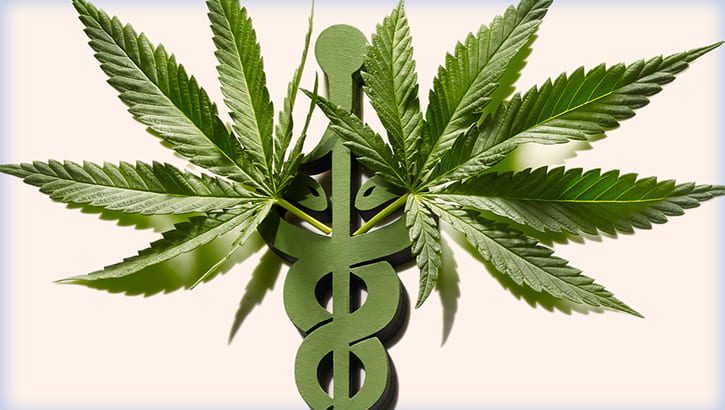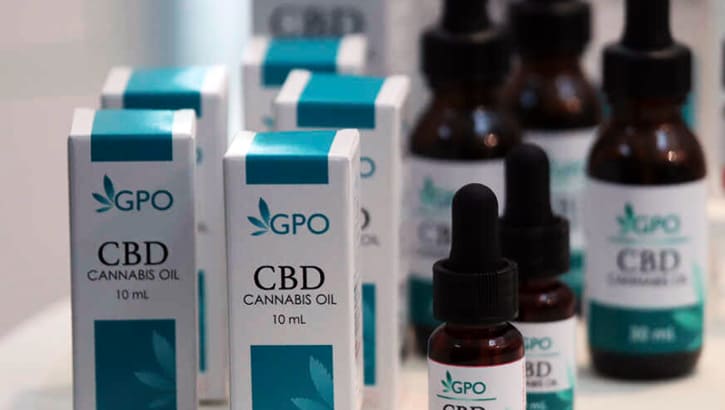What is medical marijuana?
Strictly speaking, medical cannabis is cannabis buds or concentrates or synthetic cannabinoids intended for therapeutic use. The active substances contained in the inflorescences and leaves of hemp, which scientists have dubbed cannabinoids, show a wide range of medicinal properties. In particular, medical marijuana has proven analgesic, anticonvulsant, and antispastic effects, and suppresses nausea and vomiting in cancer patients and HIV-infected patients receiving antiretroviral therapy. It is possible that marijuana inhibits the growth of cancerous tumors and has a neuroprotective effect in the early stages of Alzheimer’s disease, Parkinson’s disease and Huntington’s disease.

In world psychiatric practice, there is an experience of successful use of cannabis in the treatment of post-traumatic stress disorder. In private, a psychotherapist may recommend smoking weed to reduce anxiety, smooth out stress reactions, and get rid of intrusive thoughts.
Such a variety of medicinal properties of the plant are explained by the similarity of the structure of the main active components – tetrahydrocannabinol (THC) and cannabidiol (CBD) with anandamide and 2-arachidonoglycerin, which the body produces to protect the nervous system from overload. Brain cells transmit information along the chain, exchanging electrical impulses that arise due to the potential difference between the shells of neighboring neurons.
The appearance of a charge on the shell of a neuron that receives an impulse from a neighbor is mediated by special neurotransmitter compounds, but wise nature provided for nerve cells the right to break. Normally, a neuron that has decided that enough is enough can close itself off from unwanted impulses and restore strength, and other cells take over its functions. Receptors for endocannabinoids are scattered throughout the body, but most of them are in the prefrontal cortex and in the limbic system, such as the amygdala, striatum, hippocampus, cingulate and temporoccipital gyrus, and the basal ganglia.
With chronic pain, spastic syndrome and increased convulsive readiness, foci of pathological activity appear in the cerebral cortex, which the body cannot cope with on its own. Entering the body from the outside, cannabinoids of plant and synthetic origin bind free receptors and stop the production of gamma-aminobutyric acid, one of the leading neurotransmitters. As a result, excitation is not transmitted to the higher nerve centers and gradually fades. Curiously, first of all, negative reinforcement reflexes associated with pain and fear are suppressed, and the general inhibitory effect, which causes temporary memory and attention disorders, manifests itself only with frequent use of marijuana in high doses.
In addition, endocannabinoids are involved in the regulation of the synthesis of dopamine and serotonin, neurotransmitters that provide positive reinforcement. Using marijuana as a stimulant is not the best idea, but there are people who are forced to choose between two evils. For example, children with autism and attention deficit disorder due to insufficient dopamine production are often prescribed amphetamine-type stimulants despite many side effects, such as slowed growth and puberty, decreased immunity, digestive disorders, tremors, constant fatigue, and frequent headaches. pain. At the moment, Israeli scientists are investigating the possibility of replacing amphetamines with synthetic THC drugs, which act more gently. If the long-term experiment is successful, special children will no longer have to pay an exorbitant price for their health and psychological well-being for adaptation.
Medical and Recreational Cannabis: What’s the Difference?
Equating medical marijuana with recreational marijuana is as incorrect as pills with candy: its purpose is not to bring pleasure, but to alleviate suffering. Therefore, to obtain medical cannabis, specially bred hemp varieties with a modified chemical composition are used.
Nature has made it easier for breeders by dividing the psychedelic and medicinal functions between different components. THC is to be thanked for insight trips and stimulating effect, and CBD is mainly responsible for therapeutic properties – an extremely curious substance that does not directly affect consciousness, but affects the action of THC, partly smoothing out the negative aspects when using high doses of MJ. You are unlikely to expect a bright arrival from medical cannabis, but problems with memory, attention and reaction will become much less, and the probability of catching paranoia is close to zero.
Most medical varieties are derived from indica, a subspecies of Indian hemp with a high content of CBD – from 6 to 20%. In recreational sativa strains, CBD levels rarely exceed 1%, so the stimulating effect dramatically outweighs the relaxing effect. Medicinal cannabis has a THC content that is either low or balanced; choice of variety depends on the diagnosis. For example, for ADHD and epilepsy, cannabis with a balanced content of THC and CBD is prescribed, and for relieving spasms in multiple sclerosis and spinal cord damage, relaxing weed with a minimum level of THC is more suitable.
On the other hand, sativa is also used in medical practice – it perfectly stimulates appetite and relieves nausea. This is probably the merit of 2-AG, the endogenous cannabinoid 2-arachidonoglycerol, a close relative of THC, involved in the food reward system. When we indulge in a favorite meal or look forward to a good treat, 2-AG triggers dopamine release from the cells of the middle limbic system and hypothalamus, encouraging the desire to eat. When a sufficient amount of THC is added to one’s own resources, the most annoying nausea recedes.
Sometimes, for example, with anorexia, the natural mechanism for controlling appetite fails, and the concentration of dopamine and endocannabinoids in the blood plasma begins to fall or increases with prolonged fasting. The Center for Eating Disorders in Denver is trying to help these sufferers by using medical cannabis to reactivate the food reward system.
Medicinal properties of marijuana
The impact of cannabis on the human body began to be studied during the great psychedelic revolution, but early studies clearly lack objectivity. Since the samples included mostly marginal people who did not know the measure, therefore, for a long time it was believed that the passion for weed does not give anything but social and intellectual degradation. How cannabis works in small doses, pundits found out relatively recently and were pretty surprised when it turned out that with moderate use, marijuana does not harm everyone and not always.

Oncologists were the first to pay attention to the medicinal properties of marijuana, who noticed that patients who smoke weed are better able to tolerate chemotherapy. In 1979, the National Cancer Institute conducted one of the first clinical studies that confirmed the efficacy of synthetic THC in the treatment of persistent nausea and vomiting in cancer patients. More than half of the patients felt better taking marinol at low doses; when the dosage was increased, positive dynamics was already felt by 79% of the subjects. The most effective were high doses of marinol, which relieved 94% of patients from nausea.
Further research has established that good old Mary Jane is milder than pure lab-synthesized THC. Side effects from high doses of TDA in natural terms are less common than when taking marinol; patients suffer less from dry mouth, anxiety attacks, irritability, apathy, attention disturbances, forgetfulness and spatial disorientation. Apparently, the complex effect of all cannabinoids and terpenes affects.
